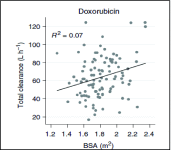Point-of-Care Technologies for the Advancement of Precision Medicine in Heart, Lung, Blood, and Sleep Disorders
- PMID: 27602308
- PMCID: PMC5003165
- DOI: 10.1109/JTEHM.2016.2593920
Point-of-Care Technologies for the Advancement of Precision Medicine in Heart, Lung, Blood, and Sleep Disorders
Abstract
The commercialization of new point of care technologies holds great potential in facilitating and advancing precision medicine in heart, lung, blood, and sleep (HLBS) disorders. The delivery of individually tailored health care to a patient depends on how well that patient's health condition can be interrogated and monitored. Point of care technologies may enable access to rapid and cost-effective interrogation of a patient's health condition in near real time. Currently, physiological data are largely limited to single-time-point collection at the hospital or clinic, whereas critical information on some conditions must be collected in the home, when symptoms occur, or at regular intervals over time. A variety of HLBS disorders are highly dependent on transient variables, such as patient activity level, environment, time of day, and so on. Consequently, the National Heart Lung and Blood Institute sponsored a request for applications to support the development and commercialization of novel point-of-care technologies through small businesses (RFA-HL-14-011 and RFA-HL-14-017). Three of the supported research projects are described to highlight particular point-of-care needs for HLBS disorders and the breadth of emerging technologies. While significant obstacles remain to the commercialization of such technologies, these advancements will be required to achieve precision medicine.
Keywords: Biosensor; commercialization; point-of-care technologies; precision medicine.
Figures







References
-
- Martin S., et al. , “Self-monitoring of blood glucose in type 2 diabetes and long-term outcome: An epidemiological cohort study,” Diabetologia, vol. 49, no. , pp. 271–278, 2006. - PubMed
-
- Keller T., et al. , “Sensitive troponin I assay in early diagnosis of acute myocardial infarction,” New England J. Med., vol. 361, no. 9, pp. 868–877, 2009. - PubMed
-
- Thygesen K., et al. , “How to use high-sensitivity cardiac troponins in acute cardiac care,” Eur. Heart J., vol. 33, no. 18, pp. 2252–2257, 2012. - PubMed
-
- Mcdonald H. P., Garg A. X., and Haynes R. B., “Interventions to enhance patient adherence to medication prescriptions,” J. Amer. Med. Assoc., vol. 288, no. 22, pp. 2868–2879, 2002. - PubMed
-
- Mozaffarian D., “Heart disease and stroke statistics–2015 update: A report from the American Heart Association,” Circulation, vol. 131, no. 4, p. e29-322, 2015. - PubMed
Grants and funding
LinkOut - more resources
Full Text Sources
Other Literature Sources

